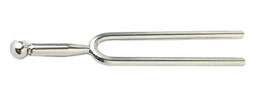
How to properly tune a guitar for a beginner
Proper tuning of a six-string guitar
“Tutorial” Guitar Lesson No. 3 Many sites on the Internet outline how to properly tune a guitar for a beginner, but nowhere is there a detailed description of the correct tuning of a guitar. It is difficult for a beginner using only tuning schemes to properly tune the guitar. I myself started as a self-taught person and therefore I can describe this process in more detail. On this site guitarprofy.ru we will approach in detail the correct tuning of the guitar. Before tuning a guitar, a beginner should know two such concepts as unison and fret, since the correct tuning of the guitar is based on the unison of sounds on certain strings and frets of the guitar.
1. Unison translated from Latin – monophony. This means that two sounds that sound the same in pitch will be unison. (Two strings put together sound like one.)
2. Fret has a broader concept, but we will consider the concept of fret in relation to the guitar neck. Frets are transverse metal inserts on the neck of the guitar (their other name is fret frets). The spaces between these inserts where we press the strings are also called frets. The frets are counted from the headstock of the guitar and are indicated by Roman numerals: I II III IV V VI, etc.
And so we turn to the question of how to properly tune the first string of the guitar. The first string is the thinnest string. A beginner should be aware that when the string is pulled, the sound rises, and when the string is loosened, the sound decreases. If the strings are stretched loosely, the guitar will sound flabby, overstretched strings may not withstand the tension and burst. Therefore, the first string is usually tuned according to the tuning fork, pressed on the fifth fret of the fretboard, it should sound in unison with the sound of the tuning fork “A” (for the first octave). A home phone can also help you tune your guitar (the beep in its handset is slightly lower than the sound of a tuning fork), you can also go to the “Tuning a guitar online” section, which presents the sound of open strings of a six-string guitar. Tuning the first string of a guitar It is advisable to loosen the first string before tuning, since our hearing is more receptive when the string is pulled than when it is overtightened and must be lowered during tuning. First, we listen to the sound on which we tune the guitar and only then we press it on the V fret, hit it and listen to the sound of the string. Follow these tips in tuning the following strings. So, having achieved unison and tuning the first string, we move on to the second.
Tuning the first string of a guitar It is advisable to loosen the first string before tuning, since our hearing is more receptive when the string is pulled than when it is overtightened and must be lowered during tuning. First, we listen to the sound on which we tune the guitar and only then we press it on the V fret, hit it and listen to the sound of the string. Follow these tips in tuning the following strings. So, having achieved unison and tuning the first string, we move on to the second.
Tuning the second string of the guitar The first open (not pressed) string should sound in unison with the second string pressed also on the XNUMXth fret. We stretch the second string to unison, first hitting and listening to the open first string, and only then the second pressed on the XNUMXth fret. For a bit of control, after you’ve tuned the second string, press it at the fifth fret and strike the first open and second string at the same time. If you hear only one clear sound similar to the sound of one, not two strings, then proceed to tuning the third string.
Tuning the third string of a guitar The third string is the only one that is tuned pressed to the XNUMXth fret. It is tuned on the second open string. The process remains the same as when tuning the second string. We press the third string at the fourth fret and tighten it in unison with the open second string. After tuning the third string, you can check it – pressed on the IX fret, it should sound in unison with the first string.
XNUMXth string tuning The fourth string is tuned to the third. Pressed at the XNUMXth fret, the fourth string should sound like an open third. After tuning, the fourth string can be checked – pressed on the IX fret, it should sound in unison with the second string.
Fifth string tuning The fifth string is tuned to the fourth. Pressed on the fifth fret, the fifth string should sound like the fourth open. After tuning, the fifth string can be checked – pressed on the X fret, it should sound in unison with the third string.
Guitar Sixth String Tuning The sixth string is tuned to the fifth. The sixth string pressed on the V fret should sound like the fifth open. After tuning, the sixth string can be checked – pressed on the X fret, it should sound in unison with the fourth string.
So: The 1st string (mi), pressed at the XNUMXth fret, sounds like a tuning fork. The 2nd string (si), pressed at the XNUMXth fret, sounds like an open first. 3rd string (sol), pressed on the XNUMXth fret, sounds like an open second. The 4th string (D), pressed at the XNUMXth fret, sounds like an open third. The 5th string (la), pressed at the XNUMXth fret, sounds like an open fourth. The 6th string (mi), pressed at the XNUMXth fret, sounds like an open fifth.
PREVIOUS LESSON #2 NEXT LESSON #4





